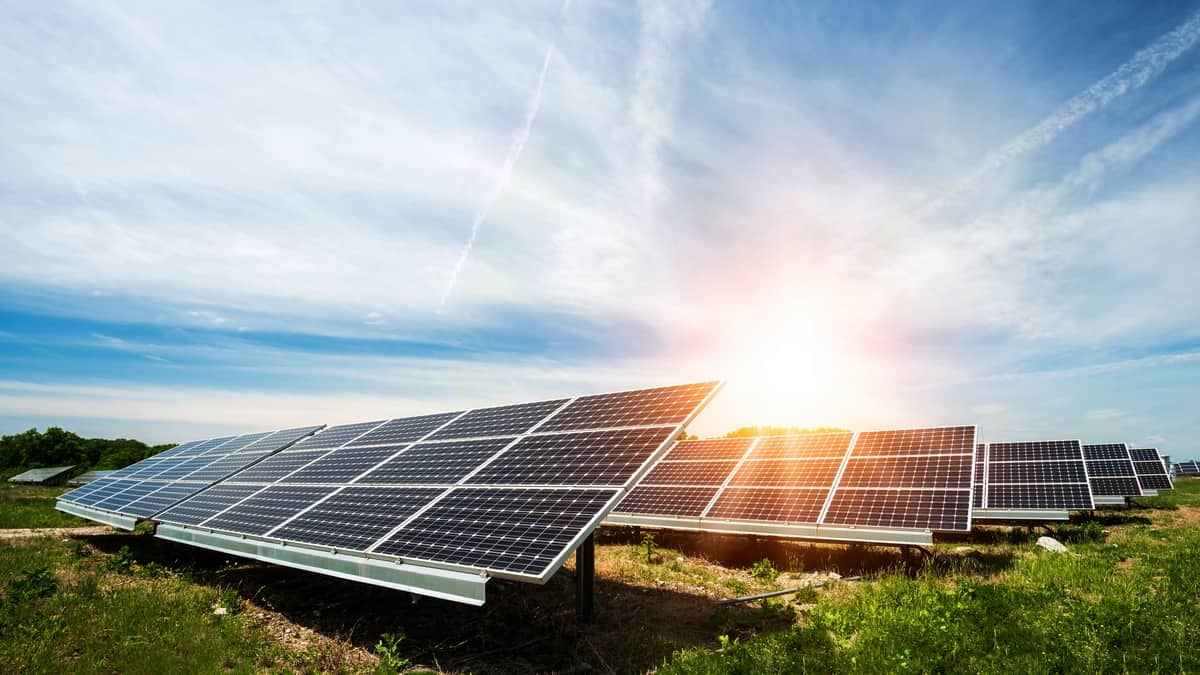Leading global risk management firm DNV predicted that solar photovoltaic (PV) power would become the most affordable source of new electricity worldwide, ultimately dominating the market.
The company’s annual global energy report highlights the expected shift: “In 2050, solar PV will be in an unassailable position as the cheapest source of new electricity globally.”
DNV’s forecasts: Coal and fossil gas lagging behind
DNV’s forecast revealed that coal will account for only 4% of the market share in electricity generation by 2050. In the same year, fossil gas will have an 8% market share. Notably, these figures reflect the decline of fossil fuels in the energy landscape.
DNV also predicts that by 2050, 70% of the world’s electricity will generate from variable renewables, primarily wind, and solar. Meanwhile, fossil fuels will contribute only 10% to global electricity production.
However, solar power capacity must grow significantly to achieve such dominance in the electricity market.
Solar’s capacity growth for dominance
DNV estimates that solar PV capacity will expand 24 times from 2020 levels.
Notably, solar power installations have been rapidly increasing over the years. Installations reached 1 gigawatt (GW) in 2004, then grew to 10 GW in 2010.
The development did not stop there as the installations achieved the 100 GW milestone in 2019 and then rose to 150 GW in 2021, regardless of the major global challenges.
All that considered, DNV envisions the market reaching a staggering 550 GW per year by 2050.
“From 2030 onwards, we expect annual additions of between 300 and 500 GW. By mid-century, total installed capacity will be 9.5 TW for solar PV and 5 TW for solar + storage. The resulting 14.5 TW of solar capacity is 24 times greater than in 2020.”
DNV
Cost reductions driving solar PV growth
DNV emphasized that significant cost reductions will primarily drive the growth of solar PV.
The report predicted that the average levelized cost of electricity (LCOE) for solar PV will decline by at least 40% by 2050. It further indicated that individual projects will enjoy up to a 60% cost reduction compared to today’s average.
“We expect the average LCOE of solar PV to fall by at least 40% by 2050, with individual projects falling by as much as 60% relative to today’s average cost. With its high cost-learning rates (26% at module level per doubling of capacity, declining to 17% in 2050), solar PV will be the cheapest source of new electricity globally by a considerable margin, despite its lower capacity factors relative to other VRES sources. By 2050, 23 PWh/yr of solar electricity will be generated worldwide.”
DNV
Solar’s role in on-grid electricity production and energy storage
The global risk management firm predicted that solar PV will contribute 30% of on-grid global electricity production and represent 54% of the world’s power capacity by 2050.
DNV also expects solar PV to benefit significantly from the plummeting costs and growth of battery energy storage. DNV projects an 80% cost reduction in battery energy storage by 2050, driven by a 19% cost-learning curve.
“Storage: pumped hydro currently provides most of today’s power system storage, but will only contribute marginally in the future. Batteries will provide most of the enormous future storage needs (Figure 17), either as standalone or in solar+storage or vehicle-to-grid configurations.”
DNV
According to the forecast, standalone utility-scale storage will more than double in size, growing from 2.7 terawatt-hours (TWh) to 8.8 TWh between 2020 and 2050.
Li-ion battery storage capacity will experience the most substantial growth, expanding from virtually nothing to 4.4 TWh by mid-century.
Solid-state batteries will demonstrate significant potential for performance and cost headways in the latter part of the decade. Meanwhile, alternative chemistries will develop to meet the demand for longer-duration storage of 5 hours or more.
See Also:
- Solar & Storage generates power to sustain the grid’s stability
- Wind, solar, and battery cover 82% of 2023 utility-scale power capacity in US
- Explore the newest solar energy storage tech from BLUETTI, including the new EP600 portable power station
- Solar panels launched into space may soon send power back to Earth
- 71% of new US power will be generated by solar and wind in 2022
The forecasted dominance of solar power as the cheapest source of electricity reflects the ongoing energy transition towards renewable sources.
Indeed, the growing penetration of renewables and advancements in energy storage technologies signifies a promising future for clean energy and sustainability.

